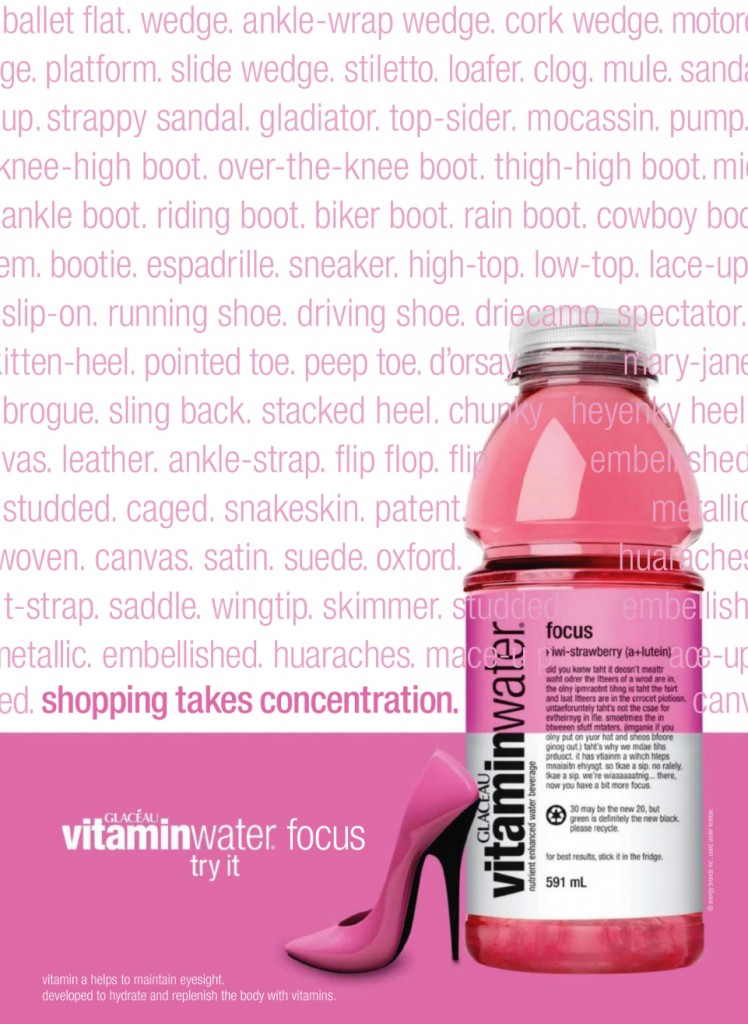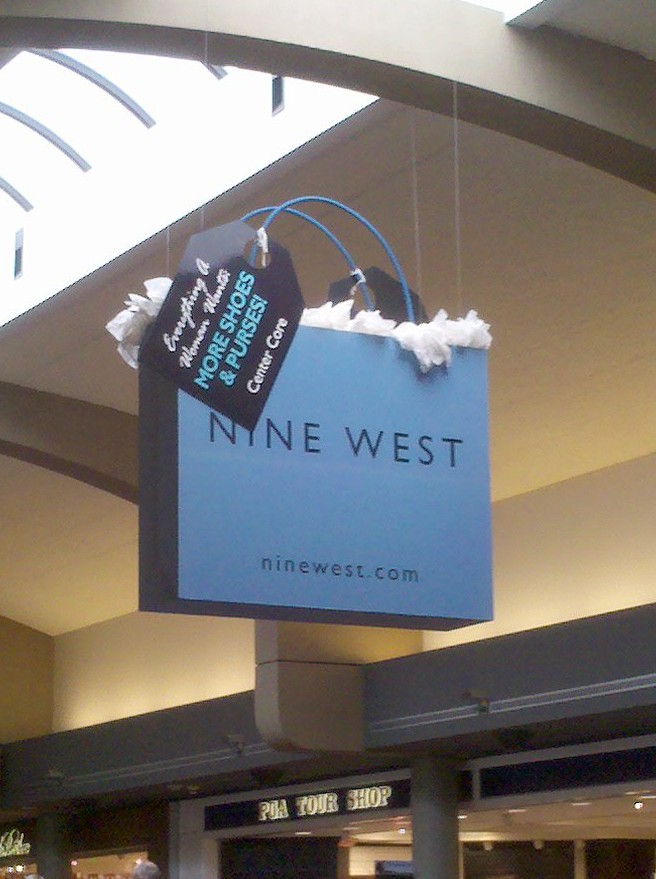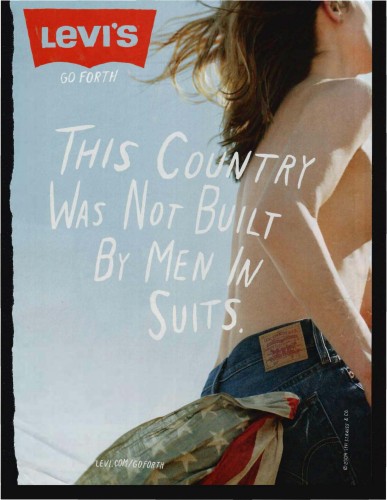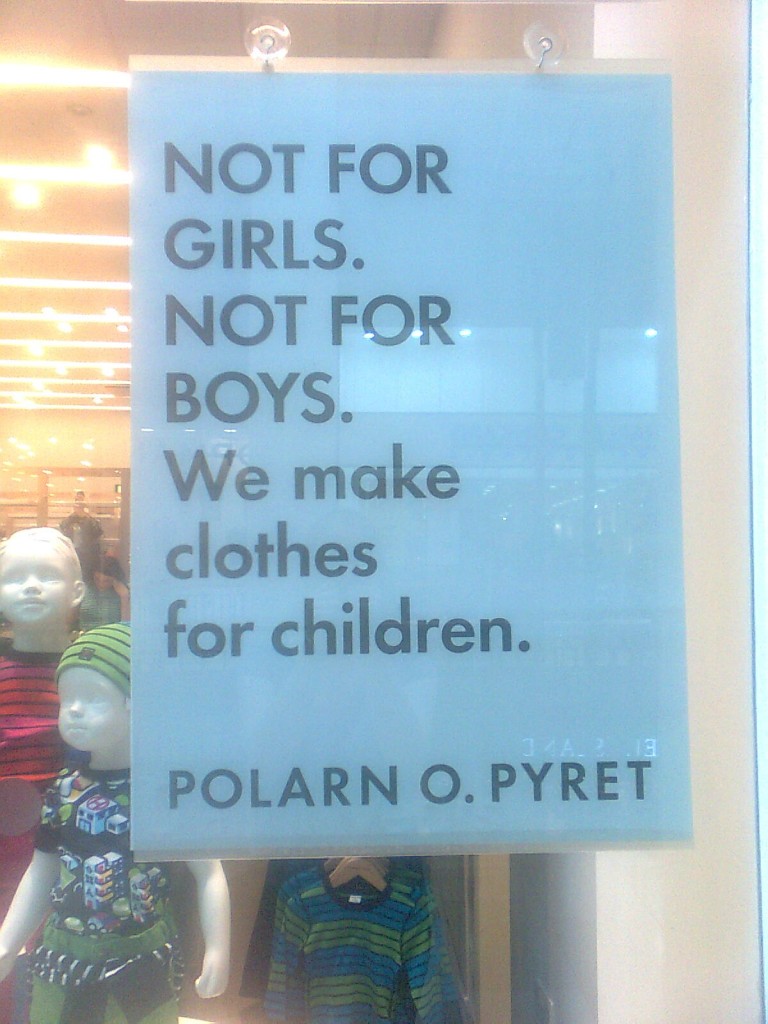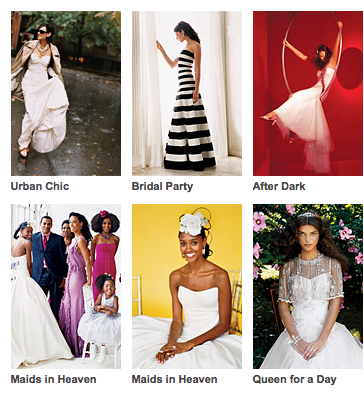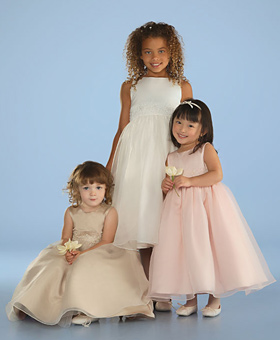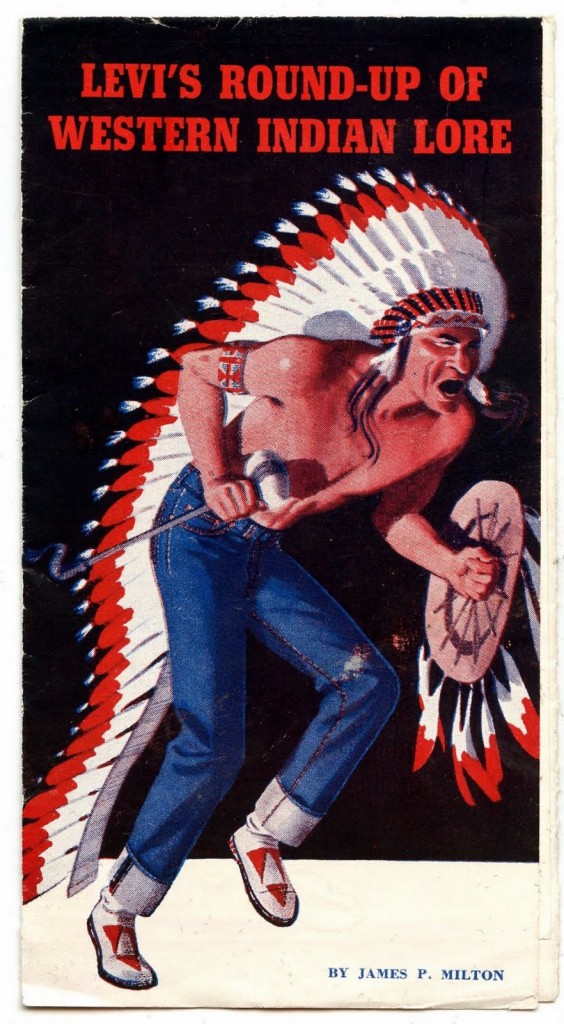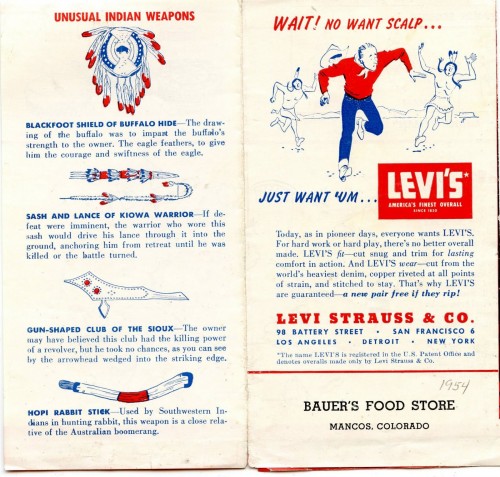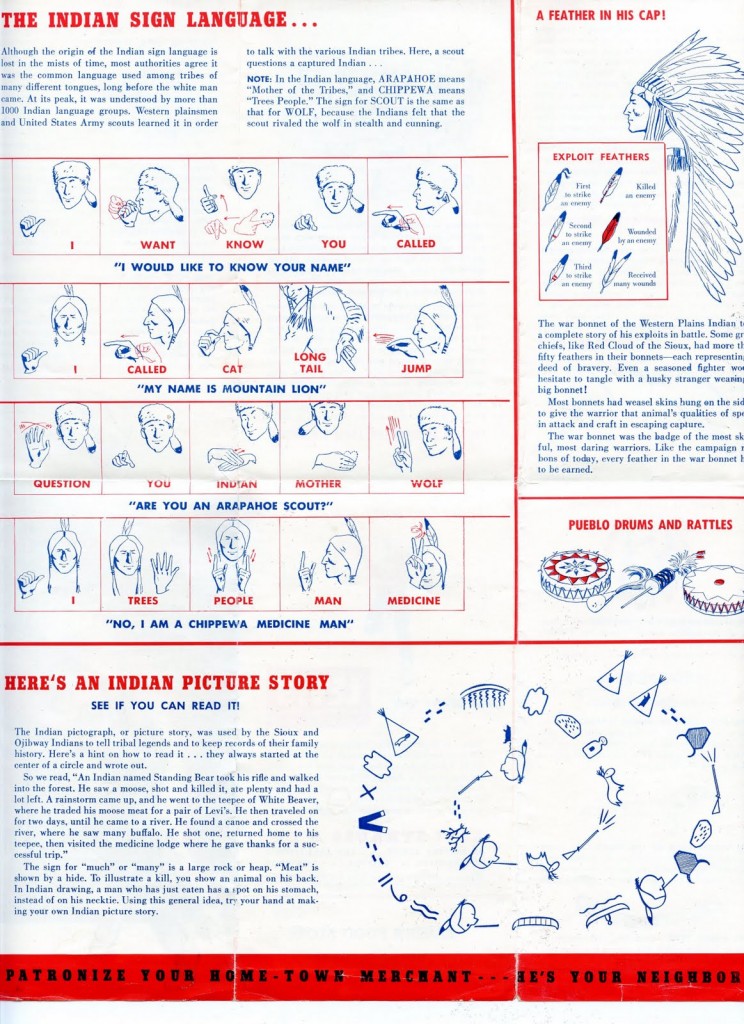Right?
Or, at least, we’re constantly told that women love shoes.
This ad in the August 2010 issue of Elle Canada got a “major eye roll” from JT. Women need focus (focus vitamin water, that is), so that they can shop for shoes. They’re just so many kiiiiiiiiiinnnnnnnds!
Meanwhile, Jacob spotted this Nine West sign in the Pittsburgh airport. It reads “Everything A Woman Wants: MORE SHOES AND PURSES!”:
Both of these ads present women as obsessed with shoes (and purses). I am not obsessed with either. I buy all my shoes at thrift stores (except running shoes) and I care so little about purses that Gwen actually buys them for me in Las Vegas and mails them to Los Angeles so that I don’t carry the exact same purse until I die.
That is all.
See also: Men hate shopping.
Lisa Wade, PhD is an Associate Professor at Tulane University. She is the author of American Hookup, a book about college sexual culture; a textbook about gender; and a forthcoming introductory text: Terrible Magnificent Sociology. You can follow her on Twitter and Instagram.

